市场资讯及洞察
.jpg)
量子计算:和平年代的“核武器”,以及赛道上的7大玩家
提到“核武器”,大家想到的是改变战争格局的终极威慑力;而在没有硝烟的和平年代,量子计算正成为新的“战略王牌”。
它不靠爆炸力,而是靠指数级算力重塑科技、经济、安全的底层逻辑。谁先掌握它,谁就能在新药研发、信息安全、新能源等领域抢占先机。
这是一场没有硝烟的“量子军备竞赛”,而谷歌、IONQ等公司,就是这场战争的主角。
一、为什么说量子计算是和平时期的“核武器”?
普通电脑像“单线程快递员”,一次只送一件包裹;
量子计算靠“量子比特分身术”,能同时处理海量信息——10个量子比特就能同时计算1024种状态。
这种差距,不是“快一点”,而是“维度不同”:就像骑自行车去追火箭。
它能干的事堪称“颠覆级”:
· 破解银行、互联网加密系统(别人算几百年,它几小时搞定)
· 模拟分子结构加速药物研发(几年缩成几个月)
· 优化交通、金融、能源系统(让全球效率更高)
所以,谁掌握量子计算,谁就能制定未来的技术规则和安全标准。这份话语权,正如核武器之于国家安全一样。
二、赛道上的7大玩家:谁在领跑?
1. 谷歌(GOOGL)——超导路线的“火箭选手”
谷歌是量子计算的顶流。
它的超导芯片“Willow”已经做到105个量子比特,速度比全球最快超算还快1.3万倍。
它能计算分子结构,加速新能源电池和抗癌药研发。
谷歌放话:5年内实现实用化应用。
短板也有:超导量子比特太“娇气”,要放在比南极还冷几百倍的环境里,目前还只能处理特定任务。但作为科技巨头,谷歌的资源和研发速度,让它仍是最有可能先造出“量子核武”的玩家。
2. IONQ——离子阱路线的“精密工匠”
IONQ用激光“抓住”带电原子作为量子比特,精度极高、错误率低。
它靠32个量子比特就宣称实现“量子优越性”,比谷歌还早一步。
现在专攻“量子纠错”,让运算更稳定,是迈向实用的关键。
缺点是难以扩展,加一个比特像往积木塔上叠块砖,容易影响整体。
但在科研模拟、精密计算等领域,它的“精准”优势明显,有望后来居上。
3. 霍尼韦尔(HON)——幕后“装备大佬”
霍尼韦尔虽然不出风头,但它的子公司Quantinuum是离子阱路线的中坚力量。
更重要的是,霍尼韦尔的激光器、制冷系统、测控设备,是全球量子实验室的标配。
它是量子领域的“军工厂”,不造火箭,但造发动机。
在未来的产业链中,它是所有玩家都离不开的“幕后功臣”。
4. QUBT——专做“量子安全”的锁匠
QUBT不做量子计算机,而是做防量子破解的安全加密。
它利用量子技术生成不可预测的密钥,给数据上“防量子锁”。
银行、政府机构已经在用它的产品。
未来量子计算能破解传统加密,而QUBT的锁正是抵御“量子黑客”的盾牌。
算是最贴近普通人生活、最早能变现的应用方向。
5. QBTS——“软件+硬件”的小众探索者
QBTS采用特殊的核磁共振技术,在常温环境下也能运行,不用极冷设备。
目前算力较弱,主要帮企业做物流规划、路线优化等小型任务。
虽然不是“超级计算怪兽”,但胜在灵活低成本,可能在特定场景率先落地。
6. Rigetti(RGTI)——被巨头甩开的追赶者
RGTI走超导路线,推出过80比特设备,但进展放缓。
现在主攻“量子云平台”,让企业租算力做实验。
只是面对谷歌、IBM的强势,它的技术差距越来越大,市场声音也逐渐变弱。
7. Laser Photonics(LAES)——“量子副业”的蹭热股
LAES主业是激光设备,量子只是“副业”。
偶尔宣布要搞“光量子技术”,但没有实际芯片或数据。
目前更像是“站在量子赛道边上的观察员”,未来潜力有待验证。
三、我们应该关注什么?
不能以为这只是科研人员的游戏。量子计算未来影响的是你我的生活:新药更快上市,电动车续航更高,网络支付更安全,物流更智能。
如果要关注投资方向或应用落地:
谷歌:技术最强、速度最快,五年内可能看到实用成果;
IONQ:纠错领先,科研和精密行业潜力大;
QUBT:防量子黑客的“安全护盾”,最贴近现实场景。
四、结语:量子“军备竞赛”才刚开始
量子计算不是“更快的电脑”,而是和平年代的核武器。它决定未来科技的主导权,也重塑国家竞争格局。
现在的玩家,有的快、有的稳、有的专,但真正的胜者,取决于谁能先跨过“纠错”和“可扩展”这两道坎。
十年后,你用的药、开的车、上的网,背后可能都有量子计算的力量。这场“无声的军备竞赛”,正在改变人类的未来。


热门话题
特朗普于本周一正式就职后,金融市场出现了不寻常的双向调整,不仅美元持续走软,美股也陷入了下行趋势。通常情况下,美元和美股的走势是呈现反向关系的,此次同步下跌究竟为何?投资者应如何应对?今天我们来讨论一下:

首先,美元下跌的一大因素是美联储的加息周期已接近尾声,市场对美联储可能暂停甚至降息的预期不断升温,这使得美元的利率优势逐渐减弱。其次,美国的经济增长表现疲软,零售销售和制造业活动数据未能显示出强劲的增长势头,且随着特朗普关税政策的临近,市场对未来美国经济的表现持谨慎态度。这些因素加剧了美元的下行压力。此外,尽管美元历来被视为避险资产,但当前市场的避险需求有所变化,资金流向黄金和债券等其他避险工具,进一步削弱了美元的吸引力。

但是美股为何会同步下跌?一般来说,当美联储放缓加息步伐时,股市会迎来利好消息。然而,当前美股却呈现出疲软的表现,主要原因有二。首先,企业盈利预期的下滑影响了市场情绪。持续的高利率环境提高了企业的融资成本,压缩了企业的利润空间,在2024年科技股独占鳌头的前提下,盈利预期下调,导致了大量投资者的抛售。其次,市场开始对美国经济衰退的风险产生担忧。尽管加息步伐放缓,但经济增长的放缓甚至衰退的可能性依然让投资者感到不安,这种不确定性促使资金暂时撤出股市,寻找其他更稳妥的投资机会。此外,债券市场的回暖也同样会加剧美股的跌势。
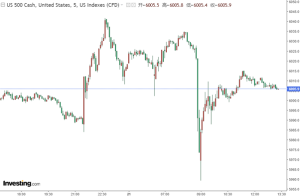
美元和美股的同步下跌意味着市场上的资金流动及风险偏好正在转变。避险资金正在重新分配,黄金和国债重新成为投资者的首选,美元不再是唯一的避风港,部分资金可能开始寻求全球化配置,转向经济前景更为乐观的非美市场。在这种市场环境下,投资者应采取灵活的应对策略。首先,黄金等避险资产通常在美元下跌时上涨,可以关注黄金相关产品。其次,大宗商品如原油、铜等的价格受美元影响较大,美元的疲软可能推动这些商品的价格上涨,可以适当关注这些领域的机会。与此同时,如果美联储加息预期不变,高等级债券将变得更加具有吸引力,投资者可以考虑增加债券的配置,以实现稳定收益。最后,也可以适当关注欧元区及亚太市场的投资机会。免责声明:GO Markets 分析师或外部发言人提供的信息基于其独立分析或个人经验。所表达的观点或交易风格仅代表其个人;并不代表 GO Markets 的观点或立场。联系方式:墨尔本 03 8658 0603悉尼 02 9188 0418中国地区(中文) 400 120 8537中国地区(英文) +248 4 671 903作者:Sylvia Qin | GO Markets 悉尼中文部
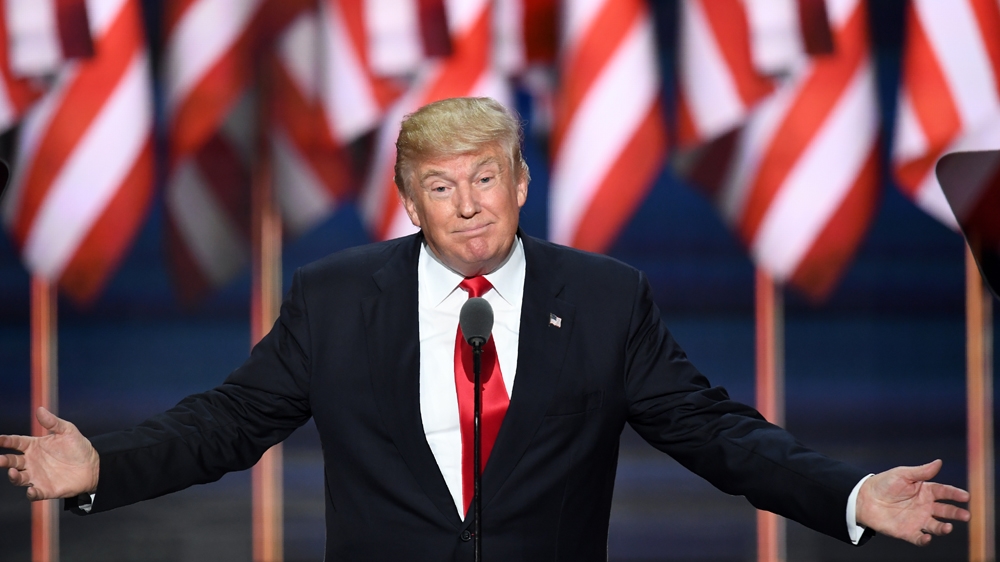

热门话题
昨晚美股休市,外盘市场已经风起云涌,媒体铺天盖地报道着特朗普的就职演说,借开盘机会,我们逐条分析下特朗普就职演说对金融市场的影响,也分析下昨晚衍生品市场的情况。特朗普宣称要收回巴拿马运河并改墨西哥湾为美利坚湾,介于其当前实际话语权已经是美国所有,在供应链端并不会有多大改变,更多的是政治和军事状态的影响;内阁将打击通胀,将宣布国家进入紧急能源状态,这点直接影响金融市场油气价格,原油和天然气价格大跌,核电价格短期或遭受牵连;对外税务机构对外国公司在美国征税,直接影响美元,昨晚美元暴跌,直接压低美债收益率助推美债价格反弹;南部边界将进入国家紧急状态,严厉打击非法移民,遣送大量国外犯罪分子,有利于美国各领域振兴和经济走强;将结束绿色新政并取消电动车强制规定,大规模生产汽车,送人类上火星,这是为马斯克量身定制的政策,短期利空电动车行业,中长期唯独利好特斯拉;停止政府审查,回复言论自由,利好抖音在美国的市场恢复;改革世贸体系,减少税收优惠,能够增加美国产品国际市场竞争力,短期利空美元;美国即日起官方政策仅有男性和女性两个性别,对跨性别行业相关题材及相关医药公司形成利空。
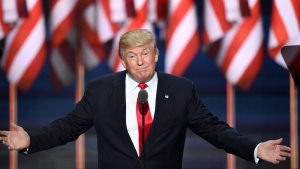
市场形容特朗普的四年将会是开盲盒的四年,正热态度明显更为激进和极端,政治将严重渗透进经济,特别是金融体系,单一政策的多空效果及最终效果很难预判。美股股指期货如期普涨,今天美股大概率会有较大波动,能源板块会形成明显打击。晚间美元指数暴跌回到108关口,金价也仅仅是保持不跌,由于地缘战争风险降低,美元的暴跌并未助推黄金,而是被对冲了大部分影响。恐慌期货排除展期影响是有一定回落的,主要挂钩的标普500走势较强。油价继续看空完全符合预判,美油在短暂触及80美元大关以后快速回到了77平台,美国政府是不会允许油价一直上涨的,原油期货空单依然可以持有。外汇方面晚盘变动极大,美元的暴跌大幅推高了非美货币,其实从结果看也兑现了特朗普当选前表态压低美日和美人的初衷。澳美大幅反弹靠近0.63大关,美日回到156以下,美元人民币重回暴跌至7.26平台,一夜跌去了一个季度的涨幅,若本周日本加息,美日将进一步回落。免责声明:GO Markets 分析师或外部发言人提供的信息基于其独立分析或个人经验。所表达的观点或交易风格仅代表其个人;并不代表 GO Markets 的观点或立场。联系方式:墨尔本 03 8658 0603悉尼 02 9188 0418中国地区(中文) 400 120 8537中国地区(英文) +248 4 671 903作者:Xavier Zhang | GO Markets 高级分析师
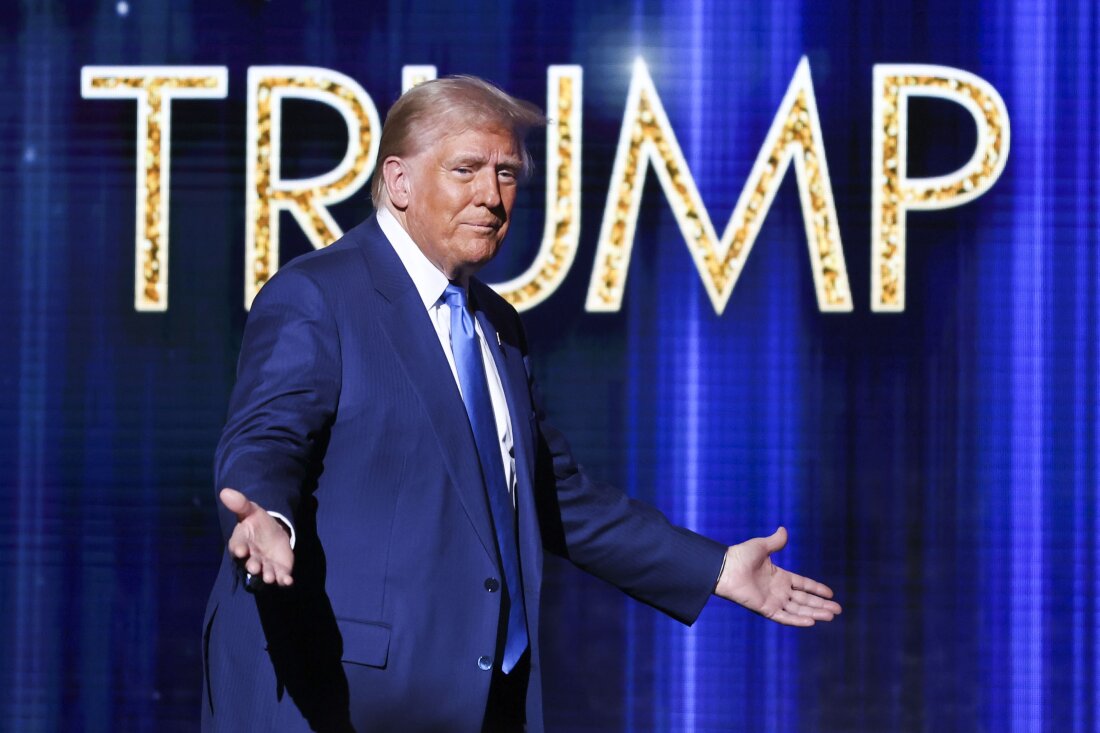

热门话题
上周五美股大涨迎接特朗普就职,今天美股休市,特朗普将宣誓就职,其川普币发行不久就连翻数倍,特朗普身价水涨船高。另一好消息是刚刚宣布的他将废除拜登颁布的每一项禁令,抖音得以在美国续命。本周没有重大金融数据影响市场,财报尽管趋于密集,但也没有特别重大的权重股影响,因此美股大概率会延续上周涨势,等到下周消息更密集周去展现调整。三大股指周五均大幅上扬,AI板块大部分上冲,七巨头全部上涨。核能电力板块涨幅更大,但国际铀价并未上涨,由此分析核技术股和电力股继续上涨概率更大,铀矿股或继续区域震荡。特朗普概念爆发,特朗普币发行助推比特币更上一层楼,其相关概念股涨幅都较大,美国金融投行券商股们纷纷被看好,高盛财报盈利破银行业年度历史记录。今天澳股金融板块也将走强,澳指也将走出明显上行。
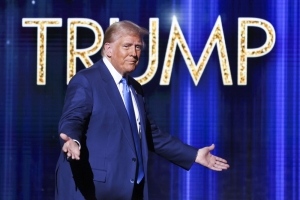
美元指数扩大涨幅,股债双涨,金价回落至2700整数关口。恐慌指数微弱下行说明市场稳定性依然不佳。油价继续如期小幅回落,美油回到78平台。外汇方面美元走强使得非美货币再度被打压,澳美跌破0.62,而日本本周加息概率大增,美日涨幅并不大,继续保持在156平台,美元人民币则在中国干预后稳步下行回到了7.33关口,但整体跌幅不大。免责声明:GO Markets 分析师或外部发言人提供的信息基于其独立分析或个人经验。所表达的观点或交易风格仅代表其个人;并不代表 GO Markets 的观点或立场。联系方式:墨尔本 03 8658 0603悉尼 02 9188 0418中国地区(中文) 400 120 8537中国地区(英文) +248 4 671 903作者:Xavier Zhang | GO Markets 高级分析师


One of the biggest indicators confounding markets, economists, and commentators over the past six months in particular, is the strength of the employment market. Not only are they stable, they are moving at rates outside historical ten year norms. Just have a look at Australia at the moment, unemployment at 4% averaging 35 to 40,000 jobs per month and participation in the employment market at or near record all-time highs.
This is not just an Australia story, have a look at the US where the non-farm payroll figures continue to run ahead of our expectations and forecasts. Yes it is eased from its peak in 2023/2024 but overall The US employment market is really solid. This is despite the fact that the cost of living crisis is entering its 28th month and according to all media factions is still ‘ending the world’.
The thing is - employment stability produces stronger than anticipated consumer spending. And we believe that this is what's being missed by traders and investors alike as the stability has directly supported stronger-than-anticipated consumer spending. Which in turn for western developed markets underscores why there has been resilience of the economy.
That's not to say a slowdown in economic growth is off the cards, more that the trajectory looks less steep and more delayed than previously forecasted. Retail sales data for December showed a solid 0.7% month-on-month (MoM) increase. Which suggests real consumption growth for the final quarter of 2024 was a year on year (YoY) 3%.
As long as the labour market remains resilient and equity prices avoid a sharp downturn, consumer spending should continue to hold up. Caveat is US savings rates, they are now at the lowest level in over 6 years so expect spending growth to moderate in the coming months. Something that was seen in 23/24 was weaker retail sales in Q1 of last year after a bumper December print - could repeat in 2025 following the strong December retail performance?
But you are probably thinking “who cares” what does this mean for my trades and what does this mean for my positioning? Well as explained in last week’s 5 thematics of 2025 - nationalism versus global trade supply is one area we need to look at. Because it will feed directly into the theme that has been going on now for 18 months which is the consumer price conundrum.
Why this matters markets have put so much money behind the rate cut trade impacts both positively and negatively to inflation will still be one of the biggest impactors to your trades. So looking to the US let's break down the December CPI data – there was a modest 0.23% MoM increase, for a YoY rate of 2.7%. Aligning with the 0.17% MoM rise in core Personal Consumption Expenditures (PCE), which and a YoY rate of 2.1%.
This effectively confirms the Fed’s inflation target has been hit. Think about that for one moment and the initial reactions in the market to start 2025. It was rift with bets that the Fed could be done, and that inflation would remain stubbornly high.
There is justification for this idea and more on that below. The December CPI suggests US core inflation to trend down to about 2% by mid-year. Secondly the trend is there as well - three-month core inflation has slowed to 2.2%, and six-month core inflation has eased to 2.3%.
These figures point to a clear and sustained moderation in price pressures. Going deeper – the biggest factor that is likely to drive US inflation lower is signs shelter costs have peaked and are beginning to ease. Owner’s Equivalent Rent rose just 0.23% in November and 0.31% in December.
These increases are much slower than the 0.4-0.5% monthly jumps seen in late 2023 and are more in line with pre-pandemic norms. Of course, there are caveats to this narrative. Residual seasonality in the data could skew the inflation readings.
For example, in both 2023 and 2024, softer inflation in the latter half of the year was followed by a sharp 0.5% MoM spike in core PCE inflation in January. But – if the November December trend in PCE inflation was to continue in February and March it would reinforce confidence among both the Fed and markets that inflation is on a sustainable path back to the central bank’s 2% target – and that should equal more rate cuts in the Federal Funds Rate. All things being equal - by the time the Federal Open Market Committee (FOMC) meets in May, there would likely be enough evidence to justify this move, especially to prevent real policy rates from rising unintentionally as nominal rates hold steady.
However – there are input costs coming from the newly installed Trump administration. Changes to immigration policy is likely to drive up wage and input cost on sectors such as agriculture and personal services. Then there are possible tariffs and other trade sanction issues that will also impact global supply and ultimately price.
If we look at the chatter from Fed officials, opinions vary on the implications of broader policy shifts. Hawkish members of the Fed expect these policies to exert upward pressure on inflation, while dovish officials, argue that any price increases stemming from these factors would likely be temporary and wouldn’t necessitate a monetary policy response. Either way – they are unknown knowns, and explains the flow of funds to the USD, CHF and gold.
It also probably explains further excitement in crypto. So – who is right and who is wrong? If we take the movement in the USD and bond markets as ‘right’ – inflation is going to move higher from here and the Fed is done.
Traders only now have moved from possible rate hike(s) – (yes higher) to a mild chance of a single rate cut in 2025. The Fed’s December dot plots – only has 50 basis points – so two cuts, which is not huge and explains the shifts. On the counter – if the current market trend is wrong we need to look at the economist forecast.
Most have 3 rate cuts in 2025 some have as much as 5 (so 125 basis points). If that was to be the case the speed and change in positioning will be rapid and the strength in the USD would need to be evaluated. That scenario, if it eventuates, would likely begin in May, there is plenty of time to reposition.
But risks remain, particularly around seasonality and policy uncertainties. In the interim, watch for fiscal policy around nationalism then look for changes in inflation and labour that lead to monetary policy changes in the coming months to maintain balance in the economy.


热门话题
2024 年的大宗商品市场表现复杂多变,能源和农业板块的疲软被金属板块的强势部分抵消。进入2025 年,整体大宗商品价格可能保持相对平稳,但各板块内部的结构性变化和宏观经济政策将对未来走势产生重要影响。今天我们将从贵金属、工业金属、能源和农产品等领域分析当前市场的挑战与未来可能的方向。贵金属主要靠避险需求与价格动能来推动。尽管大宗商品市场整体表现一般,贵金属板块却表现亮眼。其中黄金和白银尤为突出,2024年摩根大通的贵金属子指数BCOM上涨了 20%。这种强势不仅体现了贵金属作为避险资产的长期吸引力,还反映了地缘政治风险和全球货币政策不确定性对投资者情绪的影响。全球通胀、美元波动和美联储政策不确定性的影响下,2025年黄金价格有望升至3000 美元/盎司,并在第四季度维持在 2950 美元/盎司的平均水平。白银可能迎来更大的补涨空间,白银价格预计上涨至 38 美元/盎司。
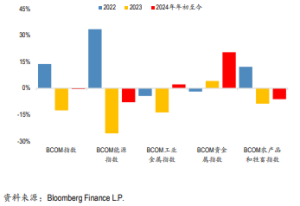
工业金属受供需紧张推动价格反弹驱动。工业金属市场在 2024 年表现相对温和,但 2025 年或将成为价格反弹的关键时期。由于供给侧受限和全球需求增长稳健,铜和铝等金属价格在未来可能显著上涨。短期来看,中国的关税政策可能对市场形成一定压力。然而,从长远来看,全球需求的增长与供应不足将推动价格走高。2025年铜价将有望回升至10400 美元/吨,2026 年均价进一步上涨至 11000 美元/吨。铝市场则受限于高成本和中国供应限制,预测价格将在 2025 年下半年升至 2850 美元/吨。

能源市场在供需失衡的深远影响下可能继续承压。2024年,天然气价格下跌14%,而石油市场仅实现小幅上涨。2025年,天然气价格预计将达到平均3.5 美元/百万英热单位,略高于当前远期合约曲线水平。但天气变化和基础设施瓶颈可能限制其上涨幅度。石油市场则面临更大的下行压力,2025年布伦特原油价格预计降至73 美元/桶,而 WTI 原油价格可能跌至 70 美元以下。非欧佩克国家的大规模增产是主要驱动因素,尤其是巴西、圭亚那和挪威的深水开采项目对市场的冲击显著。农产品方面,2025年或受到库存减少与潜在复苏的上涨推动。2024 年,农产品价格整体下滑,主要谷物和油料作物如小麦、玉米和大豆的价格均处于低位。然而,今年年农产品市场可能出现反弹迹象,受益于库存减少和天气因素的影响。高盛分析团队预计,全球谷物价格将在2025 年上涨约 3%。其中,小麦和玉米市场有望在多年低点后复苏,而棕榈油和原糖市场因供需紧张具备更强的上涨动能。此外,美国的贸易政策和对华关税问题将进一步影响全球农产品市场动态。若中美农产品贸易改善,美国农产品出口可能显著增加。

宏观经济与政策环境方面也将自上而下影响大宗商品市场,其中尤以特朗普政府关税政策为主要不确定性。若对中国的关税上调至60%,将对全球供需链条产生深远影响,当然同时也可能推动美元进一步升值。总体而言,投资者可以关注以下策略:贵金属:继续看涨黄金和白银,黄金可能成为宏观不确定性的最佳对冲工具。工业金属:关注铜和铝的价格反弹,特别是在2025 年下半年需求回升的背景下。农产品:重点关注小麦、棕榈油和原糖市场的复苏潜力。能源:对石油市场保持谨慎,警惕供过于求导致的价格下行风险。大宗商品市场的复杂性要求投资者具备灵活的风险管理能力和对基本面的深入分析。在全球经济分化加剧、政策不确定性升高的背景下,机遇与挑战并存,市场参与者需要保持高度警觉,以抓住潜在的投资机会。免责声明:GO Markets 分析师或外部发言人提供的信息基于其独立分析或个人经验。所表达的观点或交易风格仅代表其个人;并不代表 GO Markets 的观点或立场。联系方式:墨尔本 03 8658 0603悉尼 02 9188 0418中国地区(中文) 400 120 8537中国地区(英文) +248 4 671 903作者:Christine LI | GO Markets 墨尔本中文部
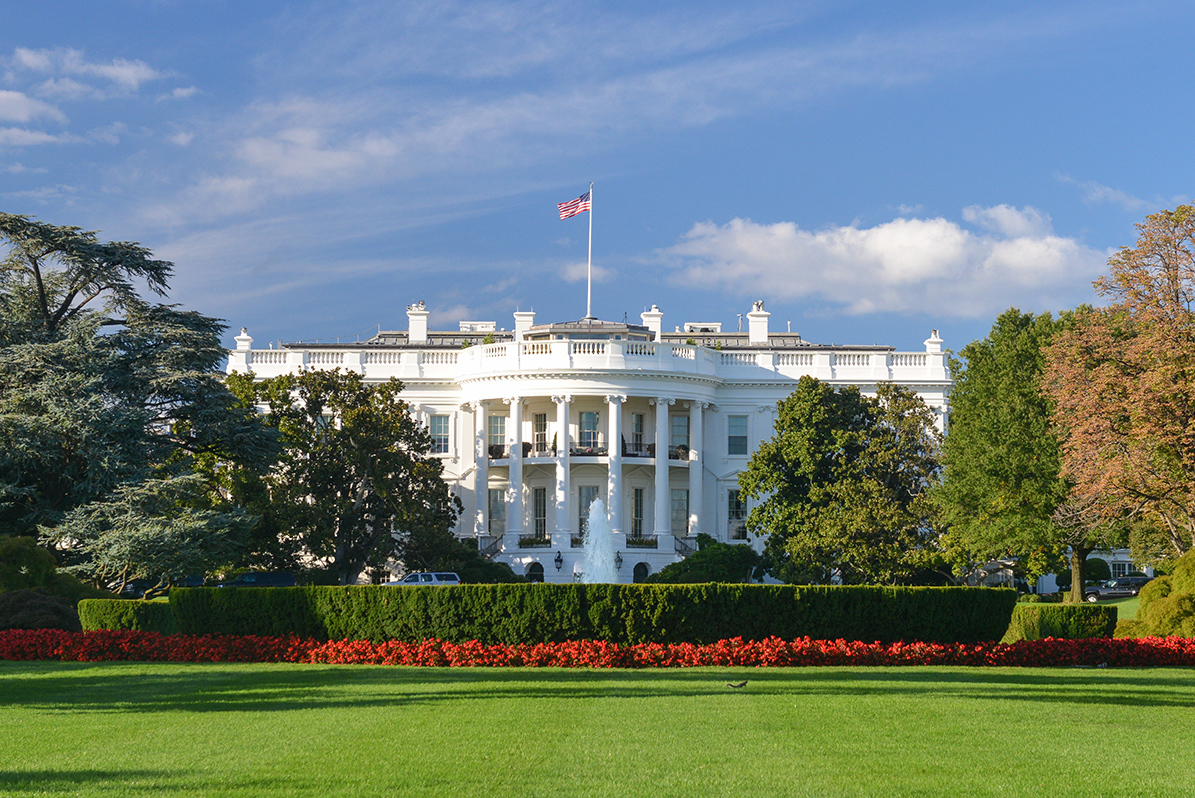

As Donald Trump prepares to take office on January 20th, the world watches with a mix of anticipation and apprehension with what may lie ahead, not only domestically but for the world as a whole. The first 100 days of any presidency set the tone for an administration's priorities and policies. Historically, this period has been viewed as crucial for the pace of implementing campaign promises and establishing a leadership style both internally within the party and the country.
What makes Trump’s first 100 days particularly significant is the potential for sweeping changes in domestic and foreign policy, with implications that extend beyond the United States. Analysts are already debating the impact these policies could have, not just on the American economy but also on global trade, geopolitics, and financial markets. From proposed tariffs to energy policy shifts, the decisions made in this critical period could ripple across multiple asset classes and redefine US international policy and relations.
This article aims to unpick what may (and may not) happen, in this crucial first 100 days. Control of the House and Senate The balance of power in Congress will play a crucial role in determining the success of Trump’s agenda and the “clean sweep”” of control is on the surface beneficial. Republicans gained a three-seat majority in the U.S.
Senate and maintained their control of the U.S. House of Representatives, in addition to gaining control of the White House. The Republican-controlled House and Senate will make it easier for Trump to pass legislation aligned with his campaign promises, including tax cuts, deregulation, and immigration reforms.
The unified government could streamline the legislative process and reduce gridlock. Although this level of control also places greater accountability on the administration and its party, leaving little room to blame opposition for policy failures it seems unlikely at this stage that this may deter what appears to be a very resolute Trump. Although internal divisions within the Republican Party could theoretically create obstacles, r the somewhat controversial make up of his hand-picked and loyal cabinet, and a historical record of removing dissenters, may mean any implications of this may not be felt until the end of the Trump term, and a clear path to essentially put in place much of what has been discussed seems likely.
Key Promises and Realities Campaign promises often comprise a series of bold statements of intent designed to attract voters as their primary function. Trump’s pre-election rhetoric emphasised economic nationalism with a continuation of the “America First” narrative, with a focus on reshaping trade agreements, boosting American manufacturing, and rolling back regulations. While these promises undoubtedly energised his voter base, they also may face significant hurdles, including Congressional approval, legal challenges, and resistance from key stakeholders.
History has shown that many presidents struggle to deliver on their most ambitious promises during the early months of their tenure. For Trump, the challenge lies in navigating a polarized political landscape and reconciling his campaign’s populist agenda with the complexities of governance. Nevertheless, the policies he prioritises in his first 100 days could provide a glimpse into how much his long-term vision and strategic direction may be in reality and what may be a very different looking Republican party and country as a whole.
In this article we will focus on the impact of tariffs, including the potential on various asset classes, a brief outline of energy policy and reference to immigration, technology and infrastructure and environmental regulation. These appeared on the surface to be the ‘five main drivers of the election campaign and so are likely to be part of this first 100 days to varying degrees. 1. Tariffs and Trade Relations One of the most contentious aspects of Trump’s campaign was his pledge to impose tariffs on imports, particularly from countries like China and Mexico and even threats towards the EU and near neighbours Canada.
The scale and scope of these tariffs remain uncertain, but their implications may be far-reaching. a) US Inflation: Tariffs on imported goods could lead to higher prices for US consumers as costs will be passed on from importer to customer. This, dependent on the extent of such, is generally accepted by most leading economists to potentially fuel an already stubborn but recovering inflation. Indeed, this has been recognised by the US central bank with reference made to this potential in this week’s last FOMC minutes.
With a rate cut pause expected for 2025 to at least March and potential even May, there is no doubt that Trump's impending presidency is playing into Federal Reserve thinking already, Whilst this approach is designed to impact and provide motivation and benefit domestic producers in the short term, there is a general acceptance that it may be high risk Another prolonged period of higher than desired inflation and so interest rates remaining relatively high are likely to have implications on US growth. b) Global Trade Relations: Tariffs often invite retaliatory measures, risking a trade war that could destabilise global markets. Countries targeted by these policies may respond with their own restrictions, disrupting supply chains and reducing international trade volumes. The financial markets are likely to react swiftly to any announcements regarding tariffs.
Equities in export-dependent industries could see volatility, while currency markets may reflect shifts in trade dynamics. For example, a protectionist stance could strengthen the dollar in the short term but weaken it if trade tensions escalate. c) Asset Class Implications The policy changes introduced during Trump’s first 100 days are expected to influence multiple asset classes: Equities: Certain sectors, such as defence, infrastructure, and energy, may benefit from increased government spending and deregulation in these areas. Conversely, industries reliant on global supply chains or international markets could face headwinds.
Supply concerns due to higher prices created by the addition of tariffs may impact on manufacturing companies profit margins if they are to remain competitive. Bonds: Inflationary pressures from tariffs could push bond yields higher, as investors anticipate tighter monetary policy from the Federal Reserve. This has already been evident over the last few weeks with the 10-year treasuries hit 9-month highs, Commodities: Energy markets, in particular, are likely to be impacted by changes in regulation and geopolitical tensions.
Policies favouring fossil fuels could support oil and gas prices, while a diminished focus on renewables may shift investment patterns. Oil moved higher and is already testing 6-month highs this week. Despite USD strength (see below) We are seeing Gold holding high levels and testing 2700 this week, as investors look for an inflation hedge perhaps.
Currencies: The US dollar’s trajectory will depend on the interplay between trade policies, fiscal measures, and geopolitical developments. A stronger dollar could hurt emerging markets, while prolonged uncertainty might weaken investor confidence. The USD has surged to reach 26-month highs this week on the back of reduced 2025 rate cut expectations and subsequent high bond yields.
Cryptocurrencies: The volatility of traditional markets may drive increased interest in cryptocurrencies, as investors look for alternative assets to hedge against inflation and geopolitical risks. Proposed regulatory changes cited during Trump’s presidential campaign have already been bullish for Bitcoin, seeing a surge since the election and testing the key $100K level. 2. Energy Policy and Geopolitics Energy policy is another area where Trump’s administration is expected to make significant changes.
His campaign emphasised support for fossil fuels (though obviously this may have been driven to some degree by the support for election funding) whilst expressing scepticism towards the concept of global warming and so renewable energy initiatives. These shifts could have profound implications for both domestic and international energy markets. Domestic Impact: Deregulation of the energy sector may boost production and create jobs, particularly in traditional energy industries.
However, this approach could also face opposition from environmental groups and states prioritizing green energy. International Relations: Energy policy decisions will influence the geopolitical landscape. For instance, increased US oil production could reduce dependence on imports and alter relationships with major oil-exporting nations.
Simultaneously, a rollback of climate commitments might strain alliances with countries advocating for global environmental initiatives. The broader geopolitical implications of Trump’s policies extend beyond energy. His administration’s approach to issues such as NATO funding, relations with China and Russia, Middle East and Russia/Ukraine conflicts will shape the international order in the years to come. 3.
Immigration and Deportation Immigration was a cornerstone of Trump’s campaign, with promises to tighten border security and increase deportations of undocumented immigrants. These policies could have wide-ranging implications: Economic Impact: Deportations could reduce the availability of the labour force in certain industries, potentially driving up costs and affecting productivity. Stricter immigration policies may also deter highly skilled workers from entering the US, impacting innovation and competitiveness.
Social and Political Implications: Increased deportations and stricter immigration enforcement could exacerbate social tensions and face legal challenges from advocacy groups. States with significant immigrant populations might resist federal mandates, leading to conflicts over jurisdiction and enforcement. Internationally, Trump’s immigration policies could strain relationships with neighbouring countries, particularly Mexico, and affect trade and diplomatic cooperation. 4.Environmental Regulation One additional area likely to see significant activity is environmental regulation.
Trump’s administration has signaled a desire to roll back many of the Obama-era environmental protections, citing their burden on businesses and economic growth. Impact on Businesses: Loosening regulations could benefit industries such as mining, energy, and manufacturing, which have long pushed for reduced compliance costs. Global Implications: However, these rollbacks could lead to criticism from international partners and advocacy groups, particularly as climate change remains a global priority.
The US’s retreat from environmental leadership might influence global efforts to combat climate change. 5. Technological and Infrastructure Initiatives There are questions on the importance of general infrastructure development as a priority despite the recognition to invest in transportation, energy grids, and logistics expansion, Such initiatives may be very specific and limited in the early days of the next Trump presidency. I nfrastructure Spending: A large-scale infrastructure bill could stimulate job creation and economic growth, though funding mechanisms (e.g., debt or taxation) will be a critical point of contention and contrary to much of the pre-election narrative.
At this stage, such spending may be limited to later in the presidential term and big spending may be limited by initiatives that aim to bring down national debt levels. Technology Integration: The AI story is not going away, and the US seems keen to be seen as leaders. As well as the import/export restrictions that may be imposed to make sure the US is ahead of the game are one of the stated goals of the Trump administration.
It would not be surprising to see this area as part of early policy decisions that put the things in place to facilitate such technological advances not only now but going forward. Summary The first 100 days of Trump’s presidency will be a critical period, offering insights into his administration’s priorities and policy direction. While many campaign promises may prove difficult to implement, the initiatives that do materialize are likely to have profound implications for the US economy, financial markets, and global relations.
Investors, businesses, and policymakers must remain vigilant as the administration’s agenda unfolds. Key areas to monitor include trade relations, energy policies, immigration, and the broader geopolitical landscape. The potential for environmental regulation rollbacks and reduced infrastructure investments further adds layers of complexity.
As uncertainty looms which is part of any:frost 100 days: scenario, understanding and preparing for, the potential risks and opportunities will be essential for navigating this new Trump era and its potentially far-reaching consequences.

